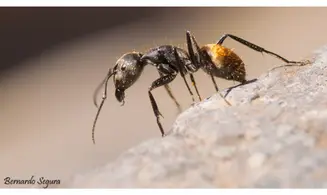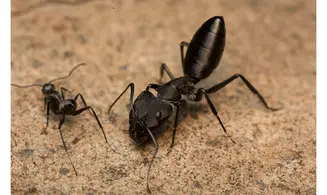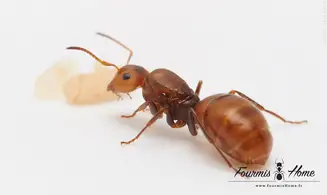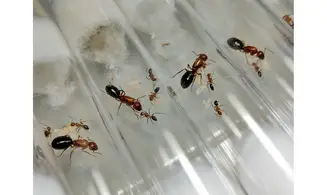Latin name: Camponotus chilensis
Taxonomy: Subfamily: Formicinae, Tribe: Camponotini
Breeding level: Intermediate
Geographical distribution: Chile, Argentina and Peru
Habitat: open pine forests
Colony form: Monogyne
Queen: Size: 10 - 12mm Color: black body, gastre with a golden down,
Workers: Size: 4 - 6mm Color: black body, gastre with a golden down,
Major: Size 9 - 11mm Color: black body, gastre with a golden down,
Male: Size: 8mm Color: black body, gastre with a golden down,
Food: Honeydew and insects: like flies, mealworms, mosquitoes and small crickets; also fruits.
Humidity: Hunting area: 50 - 70% Nest: 50 - 80%
Temperature: Hunting area: 18 - 28 ° C Nest: 24-28 ° C
Hibernation: Yes compulsory from November to March between 12 and 15 degrees.
Nest type: All types of nests will suit them, plexiglass, tube and reconstituted stone.
Description: Camponotus chilensis is one of the most common types of Camponotus in Chile. Because of their golden pilosities, they attract the eye in all the formicariums. The staining is similar to C. ovaticeps and C. spinolea. They are often found in the mountains between 1000 and 1200 m.
Development: Swarming from June to July
Foundation: Claustral (without food) Development: 30 days from egg to worker (depending on temperature).
Size of the colony: Several thousand individuals, the queen can reach the age of 15 years.


















